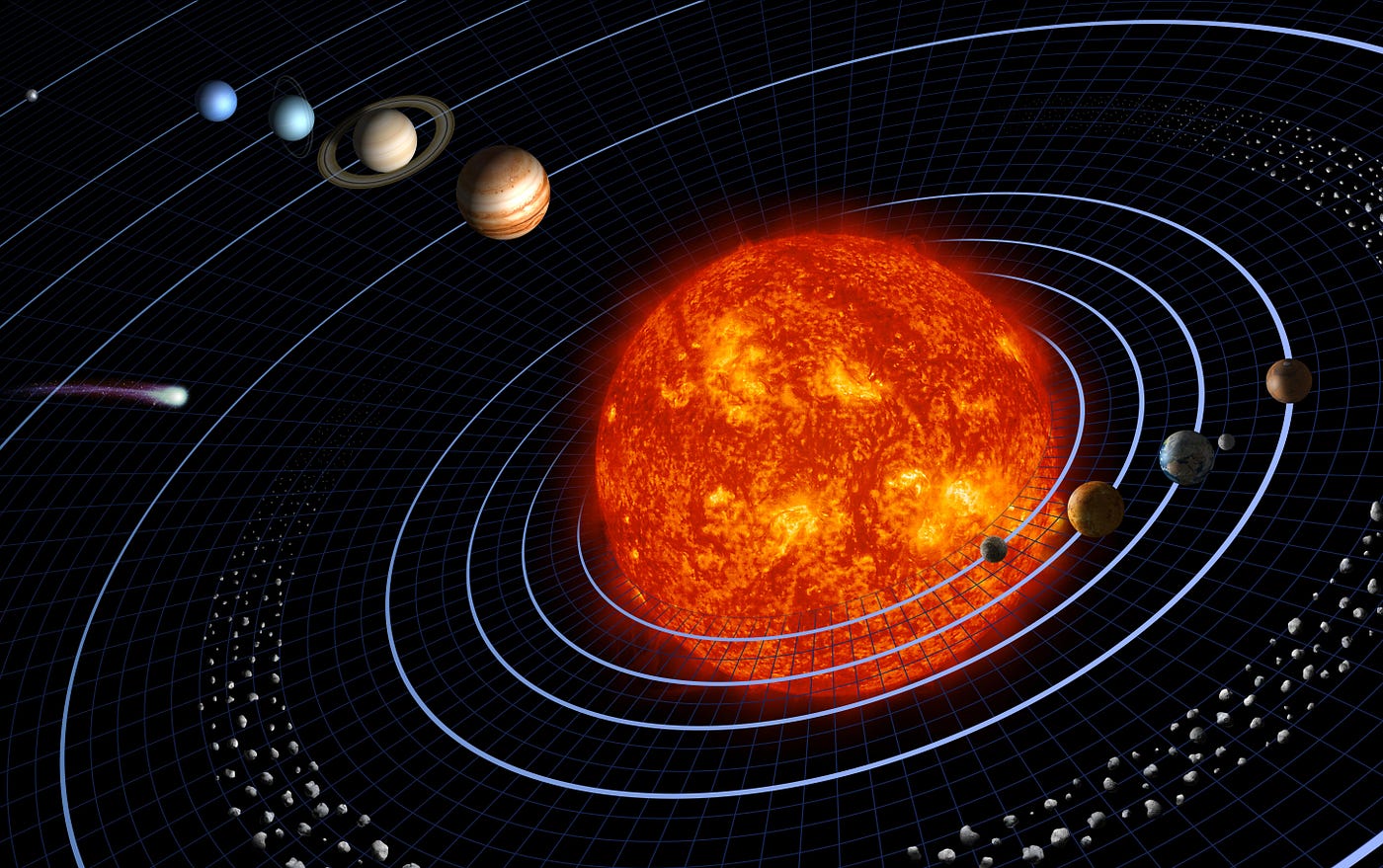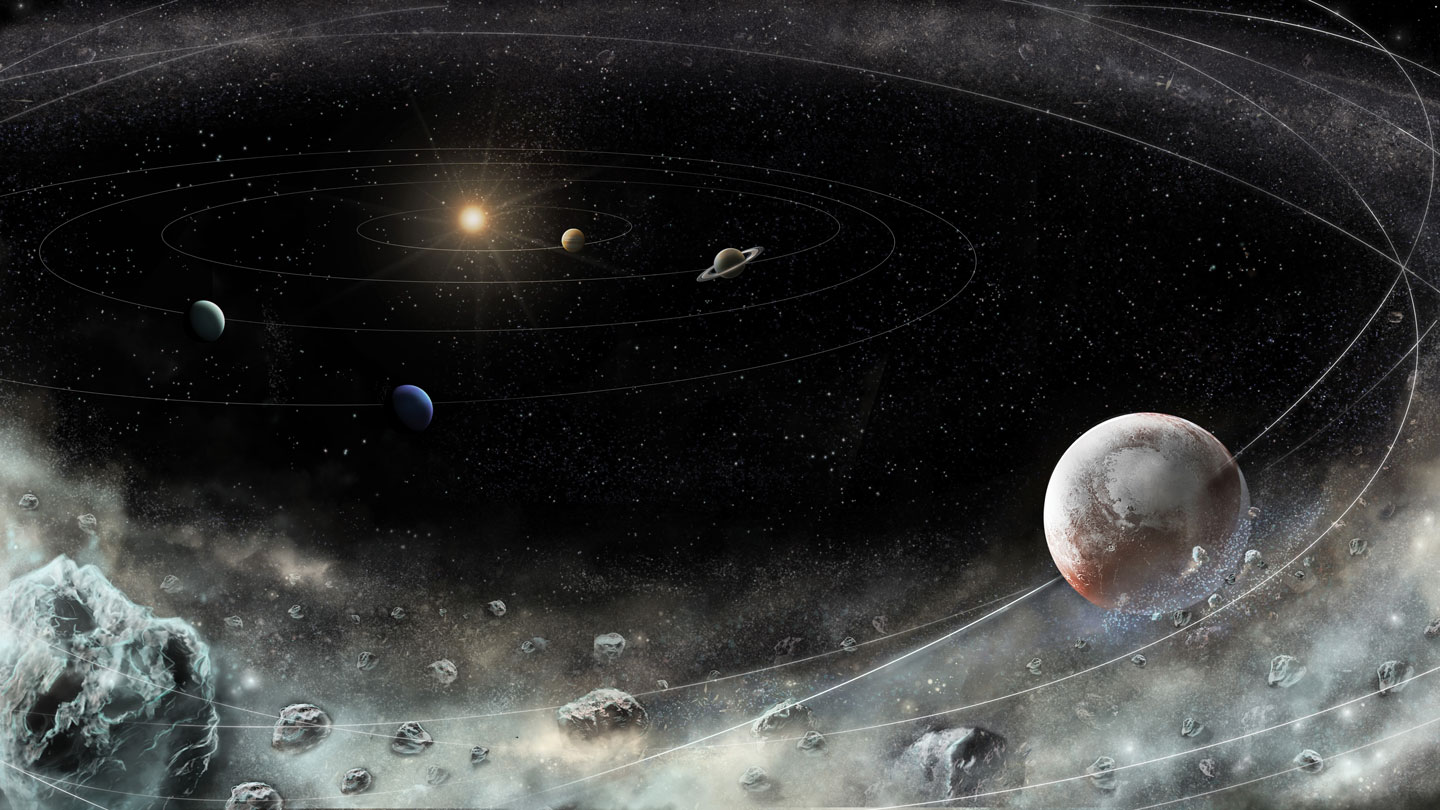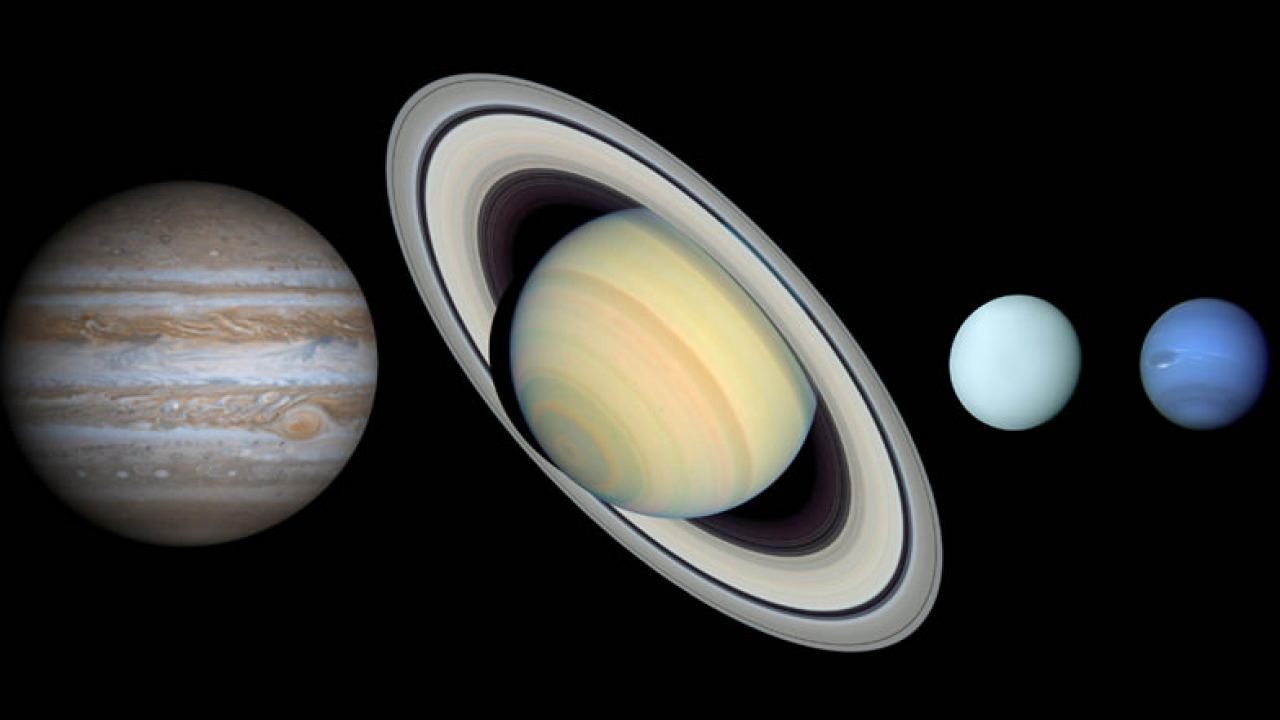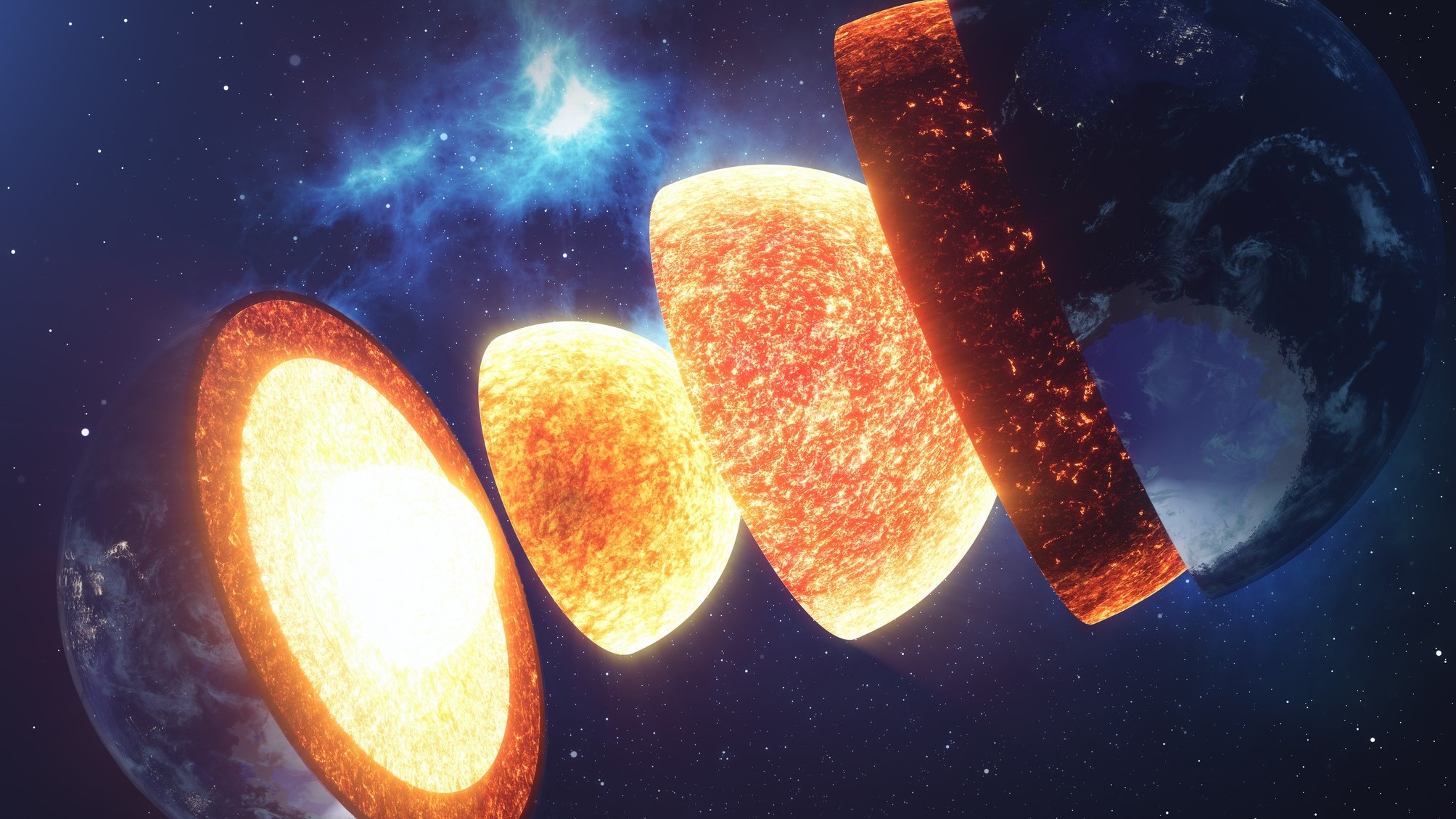Introduction
What Separates The Inner And Outer Planets: The distinction between the inner and outer planets in our solar system represents a captivating division that delves deep into the mysteries of our celestial neighborhood. This separation is defined by a combination of factors, primarily orbit characteristics and compositional differences, which provide valuable insights into the formation and dynamics of our solar system.
Orbit characteristics one of the defining features separating the inner and outer planets is their respective orbits. The inner planets, often referred to as terrestrial planets, are positioned in close proximity to the Sun. This close proximity results in their orbits being relatively small and nearly circular. The inner planets, including Mercury, Venus, Earth, and Mars, are confined to the inner regions of the solar system, residing within what is known as the terrestrial zone.

Compositional disparities further distinguish the two groups. The inner planets are primarily composed of dense, rocky materials. They have solid surfaces marked by varied geological features and relatively thin atmospheres, which are predominantly composed of heavy gases. In contrast, the outer planets, commonly known as gas giants, have an entirely different composition. They are predominantly composed of hydrogen and helium, with only a small fraction of rocky materials. These gas giants lack solid surfaces and are characterized by their immense atmospheres, often harboring intricate layers and unique features.
These distinctive characteristics and attributes of the inner and outer planets are a testament to the conditions and events that shaped our solar system during its formative years. They reflect the interplay of gravitational forces, temperature gradients, and material distribution that contributed to the diverse nature of celestial bodies within our cosmic neighborhood.
This exploration will delve deeper into the specifics of what separates the inner and outer planets, shedding light on the profound implications of these differences and how they contribute to our understanding of the evolution and structure of our solar system.
What separates the two types of planets?
Since different materials condense at different temperatures, our solar system formed different types of planets. The dividing line for the different planets in our solar system is called the frost line.
The division between the two types of planets in our solar system, namely the inner planets and the outer planets, is primarily based on their distinct characteristics in terms of composition, orbital dynamics, and location.
The inner planets, often referred to as terrestrial or rocky planets, include Mercury, Venus, Earth, and Mars. They are characterized by their relatively small size, solid surfaces, and proximity to the Sun. These planets are primarily composed of rock and metal, and their surfaces exhibit geological features such as mountains, valleys, and impact craters. They also have thin or non-existent atmospheres compared to the outer planets.
In contrast, the outer planets, also known as gas giants, encompass Jupiter, Saturn, Uranus, and Neptune. These planets are significantly larger and composed mainly of hydrogen and helium. They have thick atmospheres, lack solid surfaces, and are located at greater distances from the Sun. The outer planets are known for their impressive ring systems, extensive moon populations, and turbulent weather patterns within their atmospheres.
The key factor that separates the two groups is the asteroid belt, a region of space located between the orbits of Mars and Jupiter. This asteroid belt acts as a natural boundary, separating the inner rocky planets from the outer gas giants. The inner planets are situated closer to the Sun, while the outer planets reside beyond this asteroid belt, making it a defining feature in the classification of planetary types in our solar system.
What’s the difference between inner and outer planets?
Summary. The four inner planets have slower orbits, slower spin, no rings, and they are made of rock and metal. The four outer planets have faster orbits and spins, a composition of gases and liquids, numerous moons, and rings.
The fundamental difference between inner and outer planets in our solar system lies in their distinct characteristics related to location, composition, and orbital dynamics.
Inner Planets, also known as terrestrial planets, consist of Mercury, Venus, Earth, and Mars. These planets are positioned closer to the Sun and have relatively small sizes compared to their outer counterparts. They are primarily composed of rock and metal, featuring solid, rocky surfaces. Terrestrial planets have thinner atmospheres, with Earth being the exception, as it possesses a substantial atmosphere capable of sustaining life. These planets have shorter orbital periods, meaning they complete orbits around the Sun more rapidly.
On the other hand, Outer Planets, often referred to as gas giants, include Jupiter, Saturn, Uranus, and Neptune. These planets are situated at greater distances from the Sun and are characterized by their massive sizes and predominantly gaseous compositions. They lack solid surfaces and have thick atmospheres primarily composed of hydrogen and helium. Outer planets have longer orbital periods, taking many years to complete one orbit around the Sun. They are also known for their striking ring systems and numerous moons.
The key distinctions between inner and outer planets relate to their proximity to the Sun, composition, surface characteristics, atmospheric properties, and orbital periods. These differences result in diverse planetary features and provide valuable insights into the formation and evolution of our solar system.
What separates inner and outer planets?
Our solar system contains nine planets. The asteroid belt separates the inner and outer planets.
The separation between inner and outer planets in our solar system is primarily defined by several key characteristics, including their relative distance from the Sun, composition, size, and orbital dynamics.
Distance from the Sun: The most fundamental distinction is their proximity to the Sun. The inner planets, also known as terrestrial planets, include Mercury, Venus, Earth, and Mars. These planets are located closer to the Sun and are characterized by their relatively small size and rocky composition.

Composition: Inner planets are primarily composed of dense, rocky material, which gives them solid surfaces. They have limited atmospheres compared to the outer planets, which have thicker, gas-dominated atmospheres.
Size: Inner planets are generally smaller in size and have less mass compared to the outer planets. Their compact nature results from their proximity to the Sun during the early stages of the solar system’s formation.
Orbital Dynamics: Inner planets have shorter orbital periods and orbits that are relatively close to each other. They move more swiftly around the Sun compared to the outer planets, which have longer orbital periods and are located at greater distances from each other.
In contrast, the outer planets, often referred to as gas giants, include Jupiter, Saturn, Uranus, and Neptune. These planets are much larger, predominantly composed of gases and liquids, and are located at greater distances from the Sun. They have massive atmospheres and lack solid surfaces.
This distinction between inner and outer planets is not just a matter of physical characteristics; it also has significant implications for their formation and evolution, as well as their potential to support life. The inner planets are rocky and have stable surfaces, while the outer planets are gas giants with extreme atmospheric conditions.
What separates the two sections of the solar system?
There is an asteroid belt between Mars and Jupiter which separates the planets in two regions. The planets towards the Sun i.e. Mercury, Venus, Earth, Mars are inner planets and the other four planets are outer planets.
The two distinct sections of our solar system, known as the inner and outer regions, are separated primarily by the asteroid belt. This vast expanse of space, located between the orbits of Mars and Jupiter, contains a multitude of irregularly shaped objects, primarily asteroids, and some dwarf planets like Ceres. The asteroid belt acts as a demarcation line, distinguishing the inner and outer planets of our solar system.
The inner solar system comprises Mercury, Venus, Earth, and Mars, often referred to as the terrestrial planets. These planets are relatively smaller in size, composed of rock and metal, and have solid surfaces. They are characterized by shorter orbital periods, closer proximity to the Sun, and higher average temperatures compared to their outer counterparts.
On the other side of the asteroid belt lie the outer planets, which include Jupiter, Saturn, Uranus, and Neptune, known as the gas giants. These planets are significantly larger than the terrestrial planets and predominantly consist of gases and volatile compounds. They have extensive ring systems, numerous moons, and are located much farther from the Sun, resulting in frigid temperatures and longer orbital periods.
The asteroid belt itself is not a dense or continuous barrier, and spacecraft have safely traversed it on numerous missions. However, its presence underscores the remarkable diversity within our solar system, showcasing the stark differences between the rocky, inner worlds and the gaseous giants that inhabit the outer reaches of our cosmic neighborhood.
What distinguishes the inner planets from the outer planets in our solar system?
The inner planets and outer planets in our solar system are distinguished by several key characteristics that set them apart in terms of location, composition, and physical properties. These distinctions provide valuable insights into the unique nature of each group of planets.
Proximity to the Sun: One of the most significant factors separating the two groups is their proximity to the Sun. The inner planets, also known as the terrestrial planets, include Mercury, Venus, Earth, and Mars. They orbit closer to the Sun, and as a result, they experience higher temperatures and shorter orbital periods.
Composition: The inner planets are primarily composed of rocky or terrestrial material, characterized by solid surfaces. In contrast, the outer planets, also called the gas giants, consist mainly of gas and lack solid surfaces. Jupiter and Saturn are composed primarily of hydrogen and helium, while Uranus and Neptune have icy and rocky cores surrounded by thick atmospheres.
Size and Mass: The outer planets are significantly larger and more massive than the inner planets. Jupiter, the largest of all, is over 11 times the diameter of Earth, while Saturn, Uranus, and Neptune are also considerably larger than any of the inner planets.
Atmospheric Conditions: The inner planets have thin or no atmospheres compared to the thick, gas-rich atmospheres of the outer planets. This difference in atmospheric composition contributes to the stark contrast in surface conditions between the two groups.
The inner and outer planets in our solar system differ in terms of their proximity to the Sun, composition, size, and atmospheric characteristics. These distinctions highlight the diversity of celestial bodies within our cosmic neighborhood and have significant implications for their respective conditions, features, and potential for exploration.
How is the division between inner and outer planets defined in our cosmic neighborhood?
The division between the inner and outer planets in our cosmic neighborhood is defined primarily by two key factors: their relative distance from the Sun and their distinct physical characteristics.
Distance from the Sun: The most fundamental criterion separating the inner and outer planets is their respective distances from the Sun. The inner planets, also known as the terrestrial planets, include Mercury, Venus, Earth, and Mars. These planets are located closer to the Sun, within the inner regions of our solar system. Their proximity results in higher temperatures and solid, rocky surfaces.

Physical Characteristics: Another defining characteristic is the physical composition of these planets. The inner planets are characterized by their solid surfaces, dense rocky compositions, and relatively thin atmospheres compared to the outer planets. They are also smaller in size compared to their distant counterparts.
On the other hand, the outer planets, also known as the gas giants, include Jupiter, Saturn, Uranus, and Neptune. These planets are situated farther away from the Sun, residing in the outer regions of the solar system. They are significantly larger than the inner planets and are primarily composed of gas and volatile compounds. These gas giants have thick atmospheres and lack solid surfaces.
This division between inner and outer planets is not only defined by their physical attributes but also impacts their behavior, geological features, and overall planetary dynamics. The stark contrast between these two groups of planets underscores the incredible diversity within our solar system and provides valuable insights into the processes of planet formation and evolution.
What characteristics create the boundary between the inner and outer planets in our solar system?
The boundary between the inner and outer planets in our solar system is primarily defined by a combination of distinct characteristics related to their composition, orbital characteristics, and physical attributes.
Orbital Location: The most fundamental factor is their respective orbital locations relative to the Sun. The inner planets, also known as the terrestrial planets, include Mercury, Venus, Earth, and Mars. These planets orbit relatively close to the Sun, forming a compact, inner ring. In contrast, the outer planets, known as gas giants or jovian planets, comprise Jupiter, Saturn, Uranus, and Neptune. They are situated significantly farther from the Sun and form the outer ring of our solar system.
Composition: Terrestrial planets, or inner planets, are characterized by their solid, rocky surfaces. They have relatively thin atmospheres compared to the outer planets, consisting mainly of gases like carbon dioxide and nitrogen. In contrast, outer planets are primarily composed of gases, such as hydrogen and helium, with no discernible solid surfaces.
Size and Mass: Inner planets tend to be smaller and less massive than their outer counterparts. They are characterized by their dense, rocky cores. Outer planets are much larger and possess massive atmospheres, making them significantly more massive overall.
Number of Moons: Generally, inner planets have fewer moons compared to the outer planets. For instance, Earth has one moon, while Mars has two. In contrast, the outer planets boast numerous moons, with Jupiter and Saturn having more than 80 each.
Orbital Dynamics: The inner planets have shorter orbital periods, completing their orbits around the Sun relatively quickly. Outer planets, due to their greater distance from the Sun, have significantly longer orbital periods, taking many Earth years to complete a single orbit.
These characteristics collectively define the boundary between the inner and outer planets in our solar system, creating two distinct categories of celestial bodies with vastly different properties and behaviors.
In terms of orbit and composition, what separates the inner and outer planets in our system?
In our solar system, the separation between the inner and outer planets is primarily defined by both their orbits and compositions. These distinctions provide insight into the fundamental differences between these two groups of celestial bodies.
Orbit:
The most fundamental difference lies in their orbits. Inner planets, often referred to as terrestrial planets, are positioned closer to the Sun and have relatively small orbits. They include Mercury, Venus, Earth, and Mars. Their orbits are relatively circular and lie within the asteroid belt, which is a region between Mars and Jupiter populated by numerous small rocky bodies.
Outer planets, on the other hand, are known as gas giants and are much farther from the Sun. This group includes Jupiter, Saturn, Uranus, and Neptune. Their orbits are significantly larger, and they exist in the outer regions of the solar system, well beyond the asteroid belt. These gas giants have thick atmospheres and lack a solid surface.
Composition:
Composition is another key differentiator. Inner planets are primarily composed of dense, rocky materials. They have solid surfaces and relatively thin atmospheres. In contrast, outer planets are predominantly composed of hydrogen and helium, making them gas giants. They lack solid surfaces and have massive atmospheres, often with complex layers.
These distinctions in orbit and composition are a result of the early solar system’s formation and evolution. The inner planets formed closer to the Sun, where it was too hot for lighter gases like hydrogen and helium to condense, leading to the accumulation of heavier rocky materials. The outer planets, situated in the colder, outer regions, were able to capture and retain large amounts of these lighter gases, resulting in their gaseous and massive nature.

The separation between the inner and outer planets in our solar system is defined by their distinct orbits and compositions, reflecting the conditions and processes that shaped our cosmic neighborhood during its formation.
Conclusion
The differentiation between the inner and outer planets in our solar system, driven by distinct orbits and compositions, encapsulates the captivating diversity of celestial bodies within our cosmic neighborhood. These disparities not only offer a glimpse into the solar system’s formation and evolution but also highlight the complex interplay of forces and conditions that shaped each group.
The inner planets, or terrestrial planets, with their relatively small and circular orbits closer to the Sun, bear the scars of their tumultuous early history. They are characterized by solid surfaces, diverse geological features, and atmospheres of varying thicknesses. Earth, in particular, stands as a testament to the unique conditions that fostered life.
Conversely, the outer planets, known as gas giants, occupy distant orbits far from the Sun. Their massive, predominantly gaseous compositions are a testament to the primordial conditions that allowed them to capture and retain vast quantities of hydrogen and helium. These colossal worlds are enigmatic in their own right, each possessing a unique set of features, from Jupiter’s colossal storm systems to Saturn’s iconic ring system.
The separation between these two groups underscores the dynamic nature of the solar system’s early formation. The inner planets, sculpted by intense heat and volatile processes, and the outer giants, enriched by the abundance of lighter gases, together provide a comprehensive narrative of our cosmic history. As we continue to explore the depths of our solar system and beyond, the distinction between the inner and outer planets serves as a constant reminder of the intricate complexities that govern the evolution of celestial bodies. It encourages further inquiry into the forces at play in our cosmic neighborhood and reinforces our sense of wonder and fascination with the boundless expanse of the universe.



